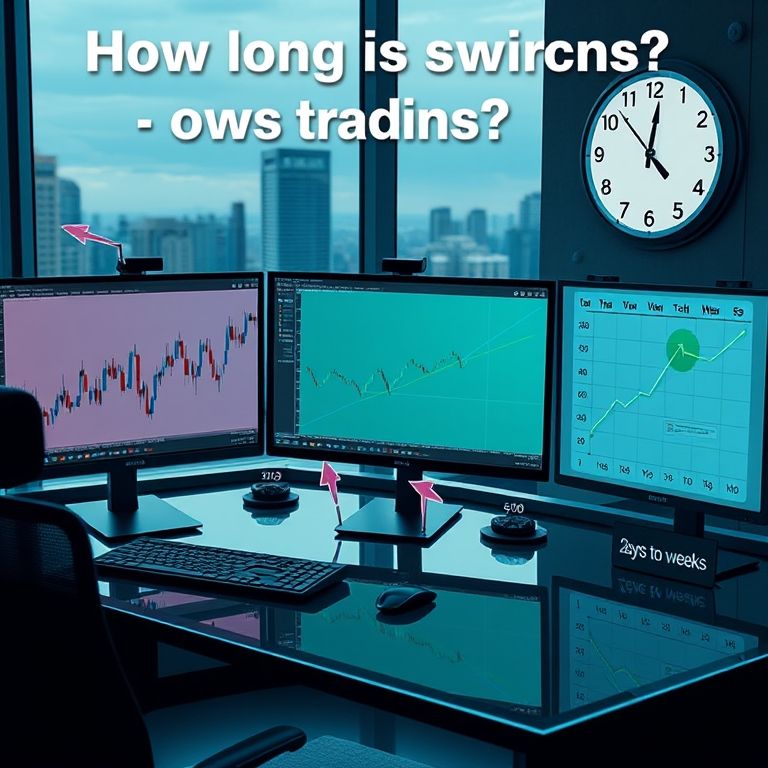how long is swing trading
How Long Is Swing Trading?
Introduction
If you’re torn between chasing quick day trades and riding a long-term investment, swing trading is often the satisfying middle ground. The typical horizon spans a few days to a couple of weeks, enough time for a meaningful move to unfold but short enough to avoid overnight surprises. Let’s unpack how long swing trading lasts, what assets fit this style, and how to stay disciplined in a fast-changing market.

Duration Essentials
- Typical window: swings usually ride for 2–7 days, sometimes a bit longer in trending markets. The goal is to catch a chunk of a move, not the full marathon.
- Share the load, control the risk: avoid piling into one setup and always pair your entry with a stop. If a thesis breaks, you trim or exit rather than mounting a bigger bet.
- Timeframe alignment: your chart look should match your pace. If you’re watching daily candles, your swing ideas per week should feel resolvable, not chaotic.
Asset Coverage
- Forex, stocks, crypto, indices, options, commodities: swing rules translate across assets but the rhythms differ.
- Forex often gifts clean trend waves between news days and sessions.
- Stocks swing with earnings and macro data, so keep an eye on catalysts.
- Crypto moves faster and 24/7; swings can tighten or widen with market sentiment.
- Indices smooth out some noise but react to macro shifts.
- Options amplify reward and risk; manage theta and implied volatility.
- Commodities mirror supply-demand cycles and inventory reports.
- Across the board, a solid thesis, a defined risk, and a flexible plan beat chasing the loudest chart.
Leverage, Risk, and Strategy
- Risk per trade: target a small slice of your account—often 0.5–2% per setup. This keeps you in the game through a string of wins and losses.
- Position sizing and stop placement: define a hard stop based on technical levels or a fixed dollar amount. Use a trailing stop to protect gains if the move continues.
- Reward-to-risk: aim for at least 2:1 on most swings. If the setup looks weaker, skip it rather than forcing a trade.
- Leverage prudence: higher leverage can magnify both gains and losses. In swing trading, conservative leverage or cash exposure often keeps you out of tight squeezes.
Tech Stack and Security
- Chart analysis tools, volume clues, and macro overlays are your friends. Simple indicators (trend lines, RSI, MACD) paired with price action often beat overfitting.
- Dealing with DeFi and cross-chain tools adds opportunities but also risk: smart contract bugs, flash loan quirks, and liquidity shifts mean you test ideas with small stakes first.
- Security reminder: keep private keys offline when possible, use reputable platforms, and diversify across venues.
Web3, DeFi, and Future Trends
- Decentralized finance enables more transparent, permissionless swing ideas but requires careful risk controls and regulatory awareness.
- The trend points toward smarter contracts, interoperable pools, and on-chain data feeds that speed up backtesting and execution. The challenge is liquidity fragmentation and evolving rules.
AI, Smart Contracts, and the Road Ahead
- AI-driven signals and backtesting can sharpen entry timing, but beware overfitting and data-snooping. Combine AI alerts with a human thesis and risk checks.
- Smart contracts may automate routine trade management, yet you still need guardrails for slippage, gas costs, and attack vectors.
- What’s next? AI-assisted risk chips, more robust analytics, and seamless DeFi-to-traditional-venue transitions.
Takeaways and a Brand Line
- How long is swing trading? It’s the middle tempo—long enough to capture meaningful moves, short enough to avoid the grind of day-long watching.
- If you want a concise slogan: Swing trading—catch the middle, ride the wave, protect the base. It’s a practical pace for modern markets.
- The path forward blends disciplined risk, versatile assets, robust charting, and smart tech. With steady practice, swing trading can align with both your lifestyle and your capital goals.